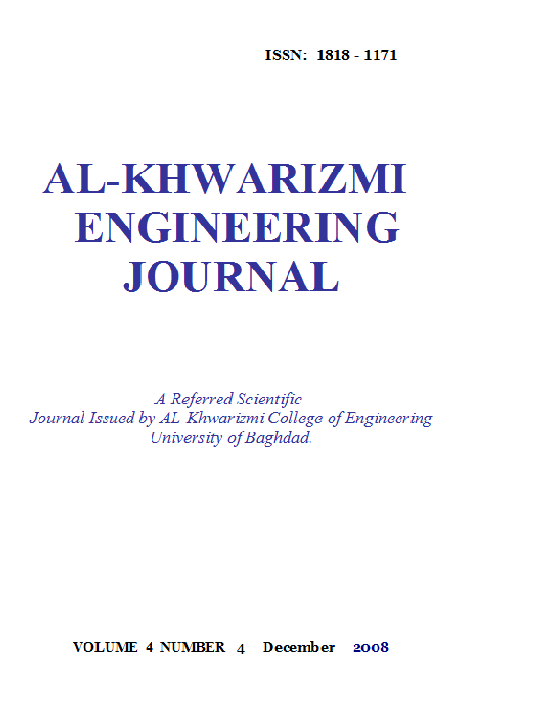Effect of Flaring Angle of Transition Structure On the Scouring of outlet structure
Abstract
The transition structure is considered as the most important hydraulic structure controlling the w/s transtion, morever it decrease the scouring of outlet structure.
seven experiment samples for transition structure was used in this research at different angles ( 10° - 90° ).
It was shown that froud number has a clear effect on the depth of the scouring, morever the high discharge rates cause an increase of the ratio between the length of the scour and its depth.
In order to select the best flaring angle it was shown that the angle of 40° has the most discharge rate, least structure length and least angle scour depth, with the firmly of the other factors affecting the scouring of outlet structure.
Downloads
References
[2] Doddial , D. , 1967 , “ Scour Below Submerged Solid Bucket – Type Energy Dissipators “ , proceedings 12th Congress International Association for Hydraulic Research , Fort Collins , U . S . A . , Vol. 3 , paper No. C13 , PP. 105 – 116 .
[3] RANald V . Giles , 1976 , “ Fluid Mechanics and Hydraulics “ . , Mc Graw – Hill Book Company .
[4] RAID S . I . AL – Naqar , 1996 , “Local Scour Downstream of Chute Structures “ . , University of Technology , Iraq .
[5] Vanoni , V . A . , ( Editor ) , 1977 , “Sedimentation Engineering “ , ASCE , Manual and Reports on Engineering Practice – No . 25 , New York , U . S . A . .
[6] John A. Robeson,M Hanif chaudhry and John J. cassidy, 1995," Hydraulic Engineering ", chapter 7, U.S.A.
[7] P.NOVAK, A.I.B. Moffat, C.Nalluri and R.Narayanan,2003,3rd ed ition, chapter 8, U.S.A.
Downloads
Published
Issue
Section
License
Copyright: Open Access authors retain the copyrights of their papers, and all open access articles are distributed under the terms of the Creative Commons Attribution License, which permits unrestricted use, distribution, and reproduction in any medium, provided that the original work is properly cited. The use of general descriptive names, trade names, trademarks, and so forth in this publication, even if not specifically identified, does not imply that these names are not protected by the relevant laws and regulations. While the advice and information in this journal are believed to be true and accurate on the date of its going to press, neither the authors, the editors, nor the publisher can accept any legal responsibility for any errors or omissions that may be made. The publisher makes no warranty, express or implied, with respect to the material contained herein.












